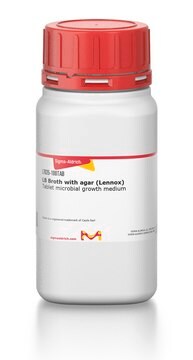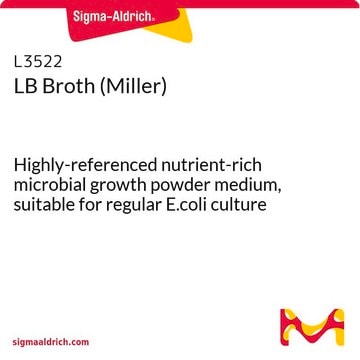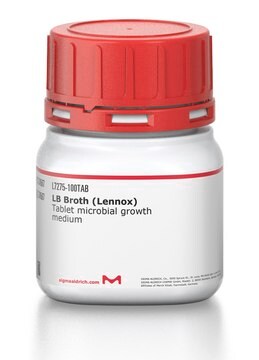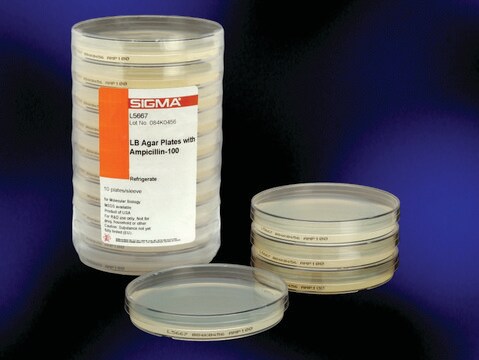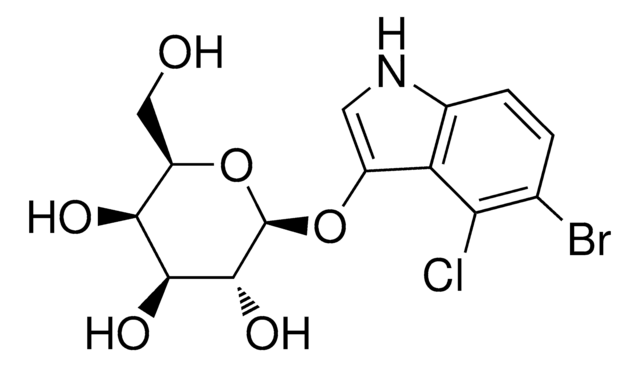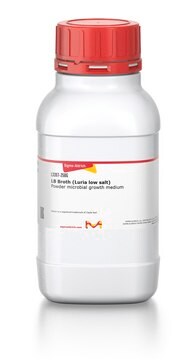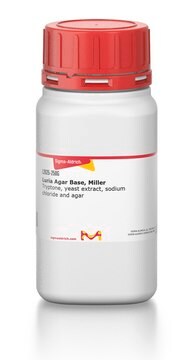L7533
LB Broth with agar (Lennox)
EZMix powder microbial growth medium
Synonyme(s) :
LB broth
About This Item
Produits recommandés
Qualité
Molecular Biology
for molecular biology
Niveau de qualité
Stérilité
non-sterile
Forme
powder
Composition
Agar, 15 g/L
NaCl, 5 g/L
Tryptone, 10 g/L
Yeast Extract, 5 g/L
Technique(s)
microbiological culture: suitable
Application(s)
agriculture
food and beverages
microbiology
Température de stockage
room temp
Adéquation
nonselective for Escherichia coli
nonselective for coliforms
Description générale
Application
Caractéristiques et avantages
- A budget-friendly alternative to pre-poured plates
- Granulated, dust-free format for safer handling and faster mixing
- Convenient small package to eliminate weighing
- Easy scale-up using larger package sizes
- Standard formulation
Notes préparatoires
2. Heat to boiling while stirring to dissolve all ingredients completely.
3. Autoclave for 15 minutes at 121°C.
To prepare Lennox L Agar: Add 1 g glucose and proceed with preparation instructions as above.
To prepare the medium of Enquist and Sternberg: Aseptically add 10 ml of sterile 1 M magnesium sulfate after autoclaving.
Reconstitution
Informations légales
Produit(s) apparenté(s)
Code de la classe de stockage
11 - Combustible Solids
Classe de danger pour l'eau (WGK)
WGK 2
Point d'éclair (°F)
Not applicable
Point d'éclair (°C)
Not applicable
Faites votre choix parmi les versions les plus récentes :
Déjà en possession de ce produit ?
Retrouvez la documentation relative aux produits que vous avez récemment achetés dans la Bibliothèque de documents.
Les clients ont également consulté
Articles
General protocols for growth of competent cells and their transformation (uptake of DNA).
General protocols for growth of competent cells and their transformation (uptake of DNA).
Protocoles
Technical Article on competent cells. Transformation is a process by which some bacteria take up foreign genetic material (naked DNA) from the environment.
Notre équipe de scientifiques dispose d'une expérience dans tous les secteurs de la recherche, notamment en sciences de la vie, science des matériaux, synthèse chimique, chromatographie, analyse et dans de nombreux autres domaines..
Contacter notre Service technique

